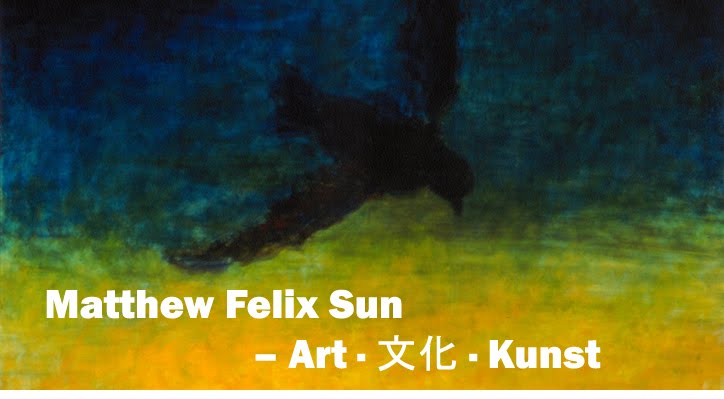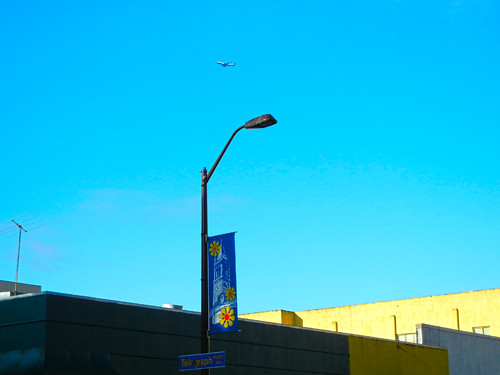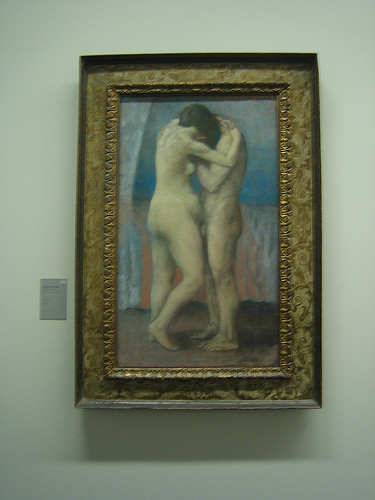What made me think of this phrase was the San Francisco Opera's new commission, "Heart of a Soldier", to be presented on the eve of the 10th anniversary of the September 11 attack on the World Trade Center.
The opera was set to music by Christopher Theofanidis to Donna di Novelli's libretto, which was in turn based on James Stewart's book of the true story of Rick Rescorla.
SFOpera's website summarized the opera thus:
What makes a hero? The question was never an academic one for Rick Rescorla, a British-born adventurer who fought in Vietnam before settling in New York as head of security for a brokerage firm based in the World Trade Center. On September 11, 2001, his extraordinary courage and calmness in a crisis paid off: Rescorla led all of the 2,700 people under his care to safety—literally singing them down the stairs—before heading back into the burning building for one last check. He never emerged.The opera covered vast ground - not only Rick Rescorla's heroic deeds on that fateful day, but also his long friendship with Dan Hill who served with him in Vietnam and helped to devise an evacuation plan for Rescorla's company in World Trade Center, and Rescorla's late found love with Susan.
The creative team argued that this is not just a hero's story, but intense love story. I sincerely believe that all three strands - hero's growth and deeds, friendship and love are interesting in their own rights, but however I examine the story and the synopsis on SFOpera's website, I see them as separate strands. They hardly mingle. They refuse to merge.
Not once the friendship endangered or strengthened the love, or vice versa. The love between Rick and Susan did not interfere with his duty, nor facilitated it. The only connection was the joint effort of Dan and Rick's effort to create an evacuation plan but then Dan had largely remained in the background on the final day of Rick.
Therefore, I became suspicious of the over-reaching of the librettist.
San Francisco Chronicle reported this:
Stewart, an amateur pianist himself, heard about the opera project from director Francesca Zambello.It seemed to me that the inclusion of so many events only made the opera episodic without much focus. The love story here seems to me just as (ir)relevant to that in John Adams' Doctor Atomic, another San Francisco Opera commission, which was meandering, tedious and lacked confrontation, struggle and drama, a fault should be squarely put on the librettist's shoulders. In that opera, there was long love scene between Dr. Oppenheimer and his wife, touching but entirely dispensable. There was no competing, conflicting motivations.
"I'm not an opera fanatic, but I have a subscription to the Metropolitan Opera and I do love music. And I started thinking, 'If this was "La Bohème," what would the acts be?' Suddenly it didn't seem so far-fetched."
When he saw DiNovelli's libretto, Stewart says, he was surprised and impressed at how much it included. "In my 'Bohème' version I'd had to cut a lot of the story out. I'd given up the whole Africa section, and Rick's childhood experiences on D-Day. But she got all that in there."
If love is to be included, it ought to have purpose. People sneered at the improbability of the plot in Verdi's Il Trovatore, but it presented easy-to-grasp emotional motivations and competing love, and the love interest caused calamity, therefore, we had a riveting theater. His Don Carlos had many love interests, often competing, and each of these propelled the march of the drama. Not so in the cases of Doctor Atomic or Heart of a Soldier.
My biggest misgiving regarding Heart of a Soldier is that there is no clear dramatic arc and no coherent dramatic situation. Take the friendship between Rick and Dan, which the opera's instigator and director Francesca Zambello had compared to the Greek tragedy-Orestes and Pylades. However, Pylades and Orestes were vying to be sacrificed so their friend could live, while there was no such conflict existed in this new opera. The comparison doesn't stand.
Ultimately, all those three strands compete with one another and the sum would come out less than parts. Such was the case with Doctor Atomic - despite its masterful orchestral music and one powerful aria, it was a very boring night at theater.
For a ruminating opera, only Wagner managed to succeed with his hypnotically chromatic writing. As for the music we are to have, we can get a glimpse from what Opera News reported that San Francisco Opera's general director David Gockley wanted "a legitimate composer, one with 'a big emotional sweep, who's not afraid to write a popular melody but still can deal with a big arc and complexity and breadth.'"
I hope that Mr. Theofanidis will succeed. But if the opera does falter due to lacking of a coherent dramatic curve, it can at best offer colorful music episodes, some blinding color bursts, which were not enough. Ever pessimistic, I'm dreading this cinematic stirring sweep already.
Gockley had a strong record of presenting new operas. But most of them are non-threatening, sleek but without a strong dramatic or aural profile. Gockley, Zambello and Theofanidis had all worked at Houston before. I'm afraid some less inbreeding might have brought much more fresh ideas and intellect into any new enterprises. Sometimes, it is much more rewarding to work with someone who's not always readily to agree with you. Beside, Gockley cannot keep giving us Gershwins, Barbers or Menotis; we need some Bergs, Schoenbergs or Bartóks!

Related articles:
--> A Wasted Opportunity - on San Francisco Opera's New Commission "Heart of A Soldier"
--> World Premiere Opera "Heart of A Soldier" and What Is a Tragedy
--> San Francisco Opera's New Commission - Heart of a Soldier

































